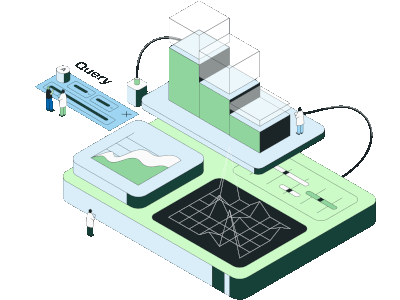Experimentation with KPIs: Choosing the right primary metric

Understanding how to choose the right metrics for your experiments can feel like trying to find a needle in a haystack.
With so many options, where do you even start? Let's examine primary metrics and see how they can guide your experiments to success.
This article will outline:
The definition of primary metrics
How to balance immediate insights with long-term goals
Strategies for selecting effective metrics
How to avoid common pitfalls
Related reading: Picking metrics 101
Understanding the role of primary metrics in experimentation
Primary metrics are the key measures that determine if your experiment is a hit or miss. They're directly linked to your key performance indicators (KPIs) and align with your big-picture business goals. Picking the right primary metric is crucial for getting results that actually mean something.
Think of primary metrics as your north star—they guide how you interpret the outcomes of your experiments. They clearly show whether a change or variation has had a positive impact on the user behavior or business goal you care about most. Choosing the right primary metric keeps your focus on what's most important.
When setting up primary metrics, consider how closely they're connected to the change you're testing. Metrics that are tightly linked to the specific action or behavior you're influencing tend to give faster, more reliable results. This means you can quickly tweak and optimize the user experience.
But don't forget to tie your primary metrics to broader business objectives. While immediate user actions give you great insights, the ultimate goal is to make meaningful improvements in metrics and KPIs that boost your company's long-term success. Finding the sweet spot between detailed behavioral metrics and high-level business metrics is key to making the most of your experiments.
Balancing immediate insights with long-term objectives
Micro-conversions give you quick snapshots of user behavior—they're great for seeing what users do right now. But they might not show the full business impact. On the flip side, macro-conversions align with your long-term goals but can miss the finer details of the user experience.
So, how do you find the right balance? When choosing your metrics and KPIs, consider both micro and macro conversions. This way, your experiments address immediate customer needs while still keeping an eye on your overall business objectives. It's all about getting a full picture of how changes affect both your users and your bottom line.
When picking your primary metric, focus on the most important indicator of success for your experiment. This should tie directly to the hypothesis you're testing. And don't forget to track secondary metrics to dig deeper and spot any potential downsides.
Remember, the goal is to select metrics and KPIs that give you actionable insights and help you make data-driven decisions. By carefully choosing the right mix of micro and macro conversions, you can optimize your experiments for meaningful improvements now and in the future.
Introducing Product Analytics

Strategies for selecting effective primary metrics
Start with a clear hypothesis and choose metrics that directly reflect it. This makes sure your primary metric lines up with what you're trying to find out. Use a mix of direct behavioral metrics and high-level business outcome metrics to capture both the immediate impact and the bigger picture.
Including secondary and guardrail metrics is also a smart move. Secondary metrics give you deeper insights into user behavior, while guardrail metrics help ensure there aren't any unintended negative effects. Tracking these extra metrics gives you a well-rounded understanding of your experiment's results.
Think about potential costs and downsides when selecting your metrics and KPIs. Create counter-metrics to spot any negative impacts on other areas of your product or business. This proactive approach helps you make informed decisions based on a complete view of how your experiment affects everything.
Before finalizing your metrics, validate your hypothesis and metrics in plain language to make sure they're clear and relevant. Ask yourself: do these metrics really measure the success of my experiment? Give your chosen metrics a sanity check to avoid costly mistakes and ensure your experiment yields results that matter.
At Statsig, we emphasize the importance of choosing effective metrics. Our platform helps you select and monitor the right metrics, making your experimentation process smoother and more insightful.
Avoiding common pitfalls in metric selection and implementation
Leaning only on traditional metrics without considering the specifics of your experiment can lead you astray. Choosing the right optimization KPI is essential for getting the most out of your A/B tests. Don't bog down your analysis with too many metrics and KPIs—focus on what's truly meaningful.
Understanding the difference between KPIs and other metrics requires clarity on your business goals and knowing how each metric contributes. Regularly reviewing and adjusting your metrics and KPIs ensures they stay aligned with your objectives. And when creating new metrics or KPIs, validate them by analyzing whether they provide actionable insights and improve decision-making.
Misusing metrics can lead to problematic behavior and take you away from your bigger goals. To keep things on track:
Link metrics explicitly to goals
Focus on trends over absolute numbers
Use shorter tracking periods
Change metrics when they stop driving change
By doing this, you ensure your metrics stay relevant and continue to drive positive change.
At Statsig, we're all about helping you avoid these common pitfalls. Our tools and resources guide you in selecting and implementing metrics that truly matter, so you can focus on what drives success.
Closing thoughts
Choosing the right primary metrics is a game-changer for your experiments. They help you stay focused on what matters most, balance immediate insights with long-term goals, and make informed decisions without falling into common traps. By thoughtfully selecting and monitoring your metrics and KPIs, you set yourself up for meaningful results that can boost your business.
If you're looking to dive deeper, check out Statsig's resources on experimentation and metrics. We're here to help you navigate the world of data-driven decisions.
Request a demo
